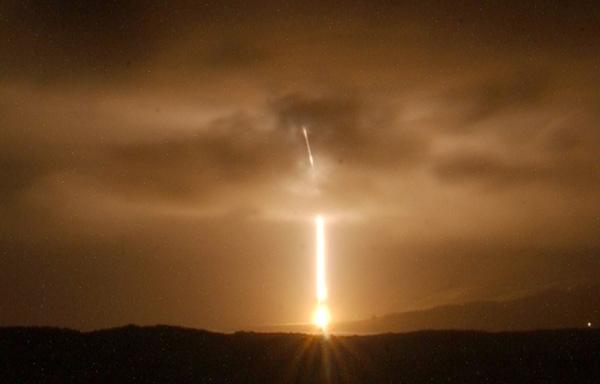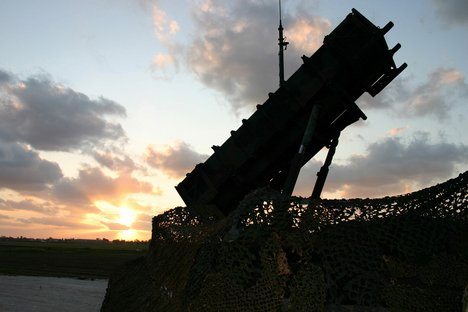To more effectively defend against ballistic missile attacks, the U.S. should concentrate on defense systems that intercept enemy missiles in midcourse and stop spending money on boost-phase defense systems of any kind, concludes a new, congressionally mandated report from a committee of the National Research Council.
The committee was asked to assess the feasibility, practicality, and affordability of U.S. boost-phase missile defenses and compare them with other alternatives for countering limited nuclear or conventional ballistic missile attacks by regional actors such as Iran or North Korea.
Boost-phase defense systems are intended to shoot down enemy missiles immediately following launch while the rocket engine is still firing. While these systems are theoretically possible, they are not “practical or feasible” because they would have only a few minutes in which to intercept enemy missiles during the boost phase and air- or ground-based systems generally cannot be located close enough to potential threats to be effective. Space-based boost-phase interceptors would require hundreds of satellites and cost as much as $500 billion to acquire and operate over a 20-year span — at least 10 times as much as any other approach, the committee estimated.
Any practical missile defense system, the committee concluded, must rely primarily on intercepting enemy missiles in midcourse, which can and should provide the most effective ballistic missile defense of the U.S. homeland. Midcourse defense provides more battle space for multiple opportunities to identify and shoot down targets. Currently, the Ground-Based Midcourse Defense (GMD) system, which deploys 30 ground-based midcourse interceptors at Fort Greely in Alaska and Vandenberg Air Force Base in California, provides an “early but fragile” U.S. homeland defense capability for a potential threat from North Korea, the report says. However, the GMD has “shortcomings” and limited ability to defend the U.S. from missiles launched by countries other than North Korea, and the Missile Defense Agency’s currently planned improvements will not adequately address these.
To overcome these shortcomings, the committee recommended adding a third interceptor site to the U.S. northeast and several technical fixes to make the GMD both more effective and less expensive. These fixes include developing smaller, but more capable interceptor missiles using tested technologies and employing a suite of proven X-band radar components at five existing early-warning radar sites.
These radars, combined with infrared sensors aboard the interceptors, would provide much more time and data for identifying enemy missiles and employing a “shoot-look-shoot” strategy, which allows multiple successive shots at the target if necessary.
The recommended GMD improvements could be implemented within the current $45 billion budget requested by DOD for fiscal years 2010 through 2016 provided other unnecessary missile defense programs are eliminated.
The first three phases of the “Phased Adaptive Approach,” under way in Europe since 2009, deploy improved interceptors and radars to protect U.S. forces and NATO allies against an Iranian attack. These phases, if properly implemented, should provide an effective defense of Europe, the report says. However, if the report’s recommended improvements are made to the U.S. GMD, then the final phase of the program in Europe — aimed at preventing long-range missiles launched in Iran from reaching the U.S. — should be canceled because it would be unnecessary for European defense and less than optimal for U.S. protection.
The U.S. should stop all efforts to develop a costly space-based sensor system known as the Precision Tracking and Surveillance System, the report says. The current Space-Based Infrared System, combined with the proposed suite of X-Band radars and interceptor sensors, will provide information that is just as reliable at a much lower cost. The Missile Defense Agency should also reinstitute aggressive research and development to improve abilities to identify actual warheads amid potential countermeasures.
The Missile Defense Agency and the U.S. military should continue improving non-boost systems critical for theater missile defense plans such as the Aegis ship-based interceptors, Terminal High-Altitude Defense, and Patriot-based missile defense. These technologies can also provide adequate protection for our Asian allies.
“For too long, the U.S. has been committed to expensive missile defense strategies without sufficient consideration of the costs and real utility,” said L. David Montague, committee co-chair and retired president of the missile system division at Lockheed Martin Missiles and Space. “As the primary agency in charge, the Missile Defense Agency must strengthen its system analysis and engineering capabilities so that it can better evaluate new initiatives before significant funding is committed.”
“Our recommended approach should provide the most effective missile defense capabilities — particularly for homeland defense — while taking into account the surrounding operational, technical, and cost issues,” said Walter B. Slocombe, former undersecretary of defense for policy and the other co-chair of the study.
The study was funded by the Missile Defense Agency. The National Academy of Sciences, National Academy of Engineering, Institute of Medicine, and National Research Council make up the National Academies. They are private, nonprofit institutions that provide science, technology, and health policy advice under a congressional charter. The Research Council is the principal operating agency of the National Academy of Sciences and the National Academy of Engineering.
[Download not found]











